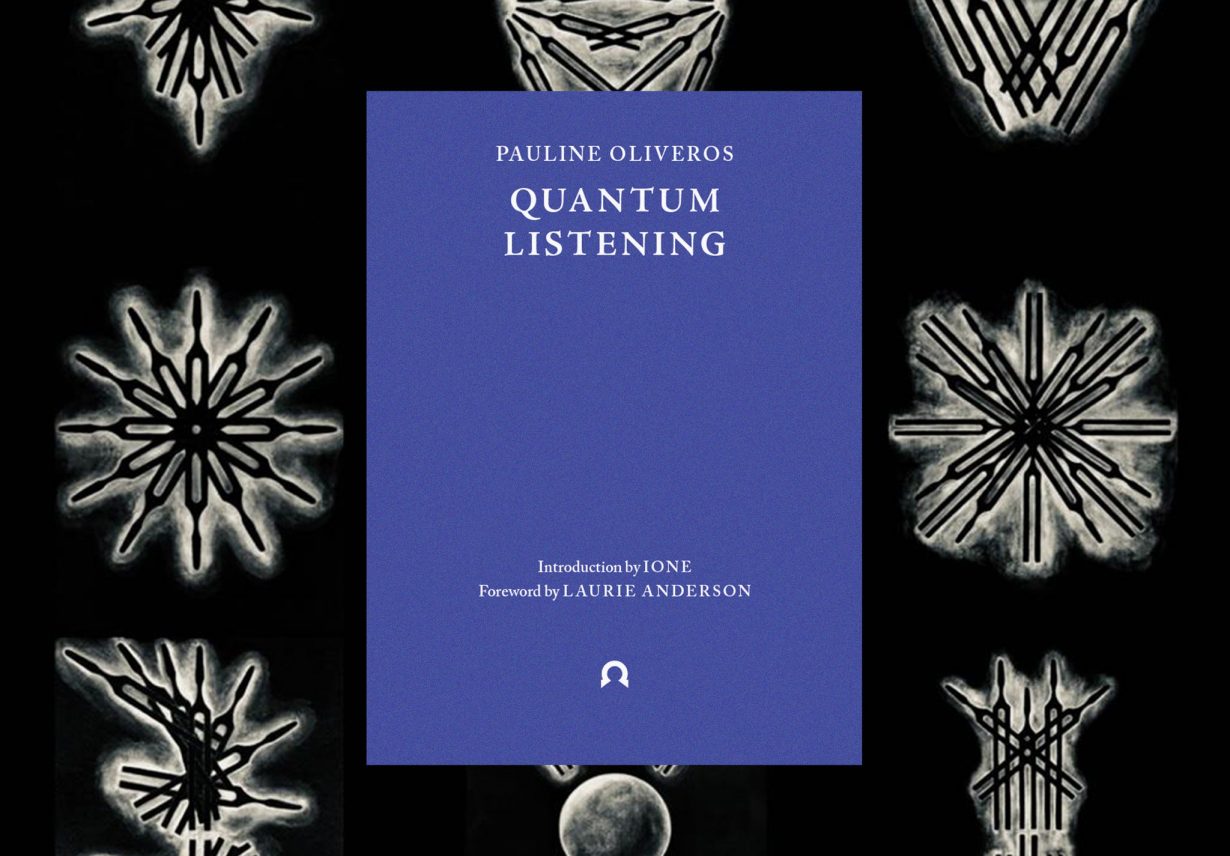On Pauline Oliveros – American avant-garde composer and hippy theorist – who dedicated her life to expanding our field of sensory perception
A recent scientific study suggested that Lapland longspurs and white-crowned sparrows were having to wait longer for their potential mating partners to come to the Alaskan tundra due to changing climate conditions. When scientists sorted through the sonic data compiled by an AI, they found a void in the soundscape. It recalled the powerful idea, put forward by the writer and environmental activist Rachel Carson, decades ago, of a Silent Spring (1962): what if the changing of the seasons, she wondered, was no longer declared by the sound of birdsong?
Sound can clarify what at first seems invisible. The late Pauline Oliveros – American avant-garde composer and hippy theorist – was a keen scholar of how reformulating the act of listening (into ‘Deep Listening’) can conjure timescales beyond conventional comprehension. Oliveros’s life was dedicated to expanding our field of sensory perception via these idiosyncratic philosophies, which she developed from the 1970s onwards, initially as a response to the Vietnam War and the self-immolation of a protester at USCD, where she was teaching at the time. Oliveros found herself turning inward from the horror, sometimes meditating on a single drone, which she would play on her accordion.
What even is Deep Listening? Here’s Oliveros, in her 1999 essay ‘Quantum Listening’ (newly reissued as a book by Ignota): ‘listening in every possible way to everything possible to hear no matter what you are doing,’ she writes. ‘Such intense listening includes the sounds of daily life, of nature, of one’s own thoughts as well as musical sounds.’ Or as Laurie Anderson writes in a new foreword, ‘Deep Listening puts experience before everything else.’ It’s ‘inside your head and empathetic. Both focal and global.’ In an age of increasingly passive listening, Oliveros was concerned to rethink sound as a communal form of activity: not merely a one-sided relationship between the performer and audience, but as an ever-expanding project of awareness.

So far, so good. But Oliveros’s prose frequently draws on a grander spiritual ambit. In the essay, her language suddenly becomes incandescent. Quantum Listening – which flows out of Deep Listening – pays attention to multiple realities, she writes. It’s ‘perception at the edge of the new. Jumping like an atom out of orbit to a new orbit – creating a new orbit – as an atom occupies both spaces at once one listens in both places at once.’ The Quantum Listener ‘listens to listening’.
You could say that Oliveros had been practising her philosophy of heightened listening since childhood. She was born in Houston in 1932. She grew up with a keen interest in soundscapes – the music of crickets, frogs and mockingbirds that filled the world around her. She recounts in Quantum Listening how, on her twenty-first birthday, she was gifted a tape recorder by her mother, which she immediately turned to face the window of her San Francisco apartment. She noticed that the microphone would record sounds that she had not heard before. ‘I said to myself then and there: “Listen to everything all the time and remind yourself when you are not listening.”’
Just so, Quantum Listening is filled with aphoristic provocations about the soundscapes of the everyday, and what happens when we open ourselves up to a listening experience that pays absolute attention to this: reading the world around us almost like a musical score. Some advice is downright practical. ‘Listening is the key to performance.’ (A simple- enough but oft-forgotten principle for all musicians.) Other observations are still refreshing. ‘One hears repeatedly that we live in a “visually oriented society”’, Oliveros writes, ‘even though the ear tells the eye where to look.’ Telescopes allow us to peer at galaxies at the edge of the universe, but what if we could also ‘hear’ them? (Directly, rather than through the radio waves of deep space.) When NASA launched a multi-million-dollar Mars probe in the late 1990s, they – as an after-thought – kitted it out with a lousy $15 microphone stripped from a hearing aid, Oliveros laments.

Oliveros thought a lot about the distinction between hearing and listening. Hearing, she writes, ‘represents the primary sense organ – hearing happens involuntarily’. But listening is voluntary. ‘All cultures develop through ways of listening.’ Some thoughts are dreamier. ‘What would you want to hear if you had a bionic ear that could let you listen to anything, anywhere, any time?’ she wonders. ‘Would you like to zoom into a waterfall to hear individual sounds of the falling drops?’ Oliveros – caught in rapt attention – appears to be almost, unwittingly, describing a fatal level of abstraction.
There’s nothing wrong with this, of course. But there’s a temptation – at a time when the idea of attentive listening has never been more easily commodified and co-opted – to ask: so what? After all, Hillary Clinton kicked off her doomed campaign for the 2016 presidential election with a much-hyped ‘listening tour’, full of earnest nodding and note-taking to signal to voters that she was, well, really, deeply, truly listening. (These days, business coaches regularly espouse Deep Listening as yet another leadership skill for their clients.) At this point, the idea seems almost like a form of surrender.
I find Oliveros’s pursuit of an enhanced sensorial experience more persuasively formulated in her music than her writing. The consequences of that intensified sense of receptivity can be heard throughout the brilliant 1989 album Deep Listening in which Oliveros on accordion, trombonist Stuart Dempster and vocalist Panaiotis recorded a sequence of sustained tones within a hulking subterranean cistern, built by the US military in Washington State. A great curtain of sound sweeps through the space – blurred in on itself by the 45-second reverberation time. Slowly, imperceptibly, the concrete cavern becomes a resonating chamber. An instrument in its own right.
Quantum Listening by Pauline Oliveros Ignota, £6.99 (softcover)
